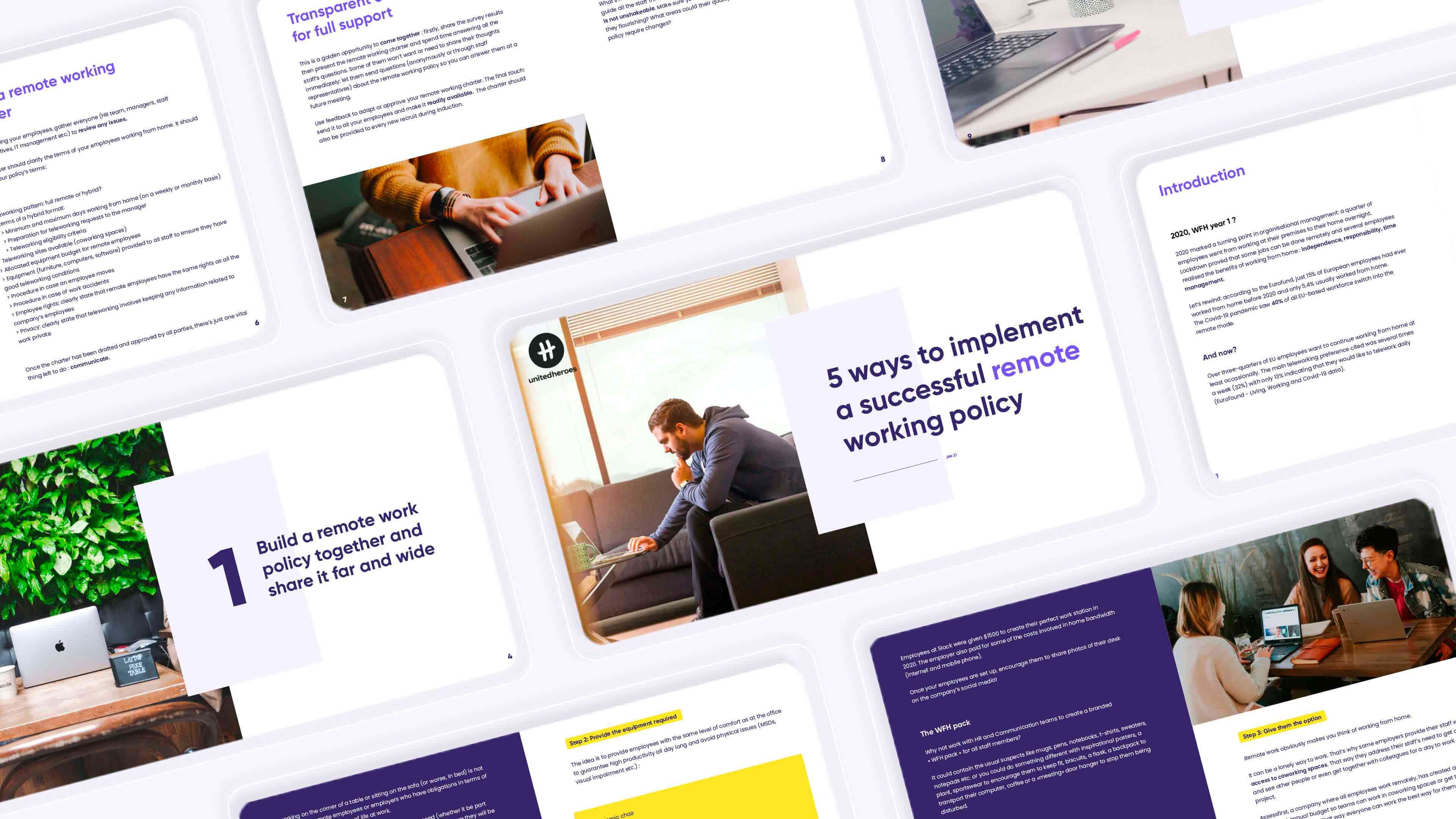Best practices for an effective WFH policy
2020 was a turning point in the organisation of work.
In 2021, over three-quarters of EU employees wanted to continue working from home atleast occasionally. The main WFH preference cited was several times a week (32%) with only 13% indicating that they would like to work remotely daily (Eurofound - Living, Working and Covid-19 data).
Great source of personal and professional fulfillment for some employees, working from home can also have the opposite effect for some others if it is not well structured or poorly accepted. The sense of well-being at work can then gradually fade away. This is why it is essential to understand the concerns and needs of your teams and to obtain the support of all your employees..
How to create a remote working charter? How to ensure the commitment of all employees? How can your corporate values be transmitted despite the distance? How to provide a good quality of life at (tele)working?
In this white paper, you will find advice and tips on how to create and implement a successful teleworking policy that will get the support of your employees and ensure your corporate culture !
Table of contents:
- Build a remote working policy together and share it far and wide
- Help employees create an optimal work station
- Build a sense of belonging
- Create a social bond
- Get the best out of remote onboarding
- Improve staff's mental and physical health
